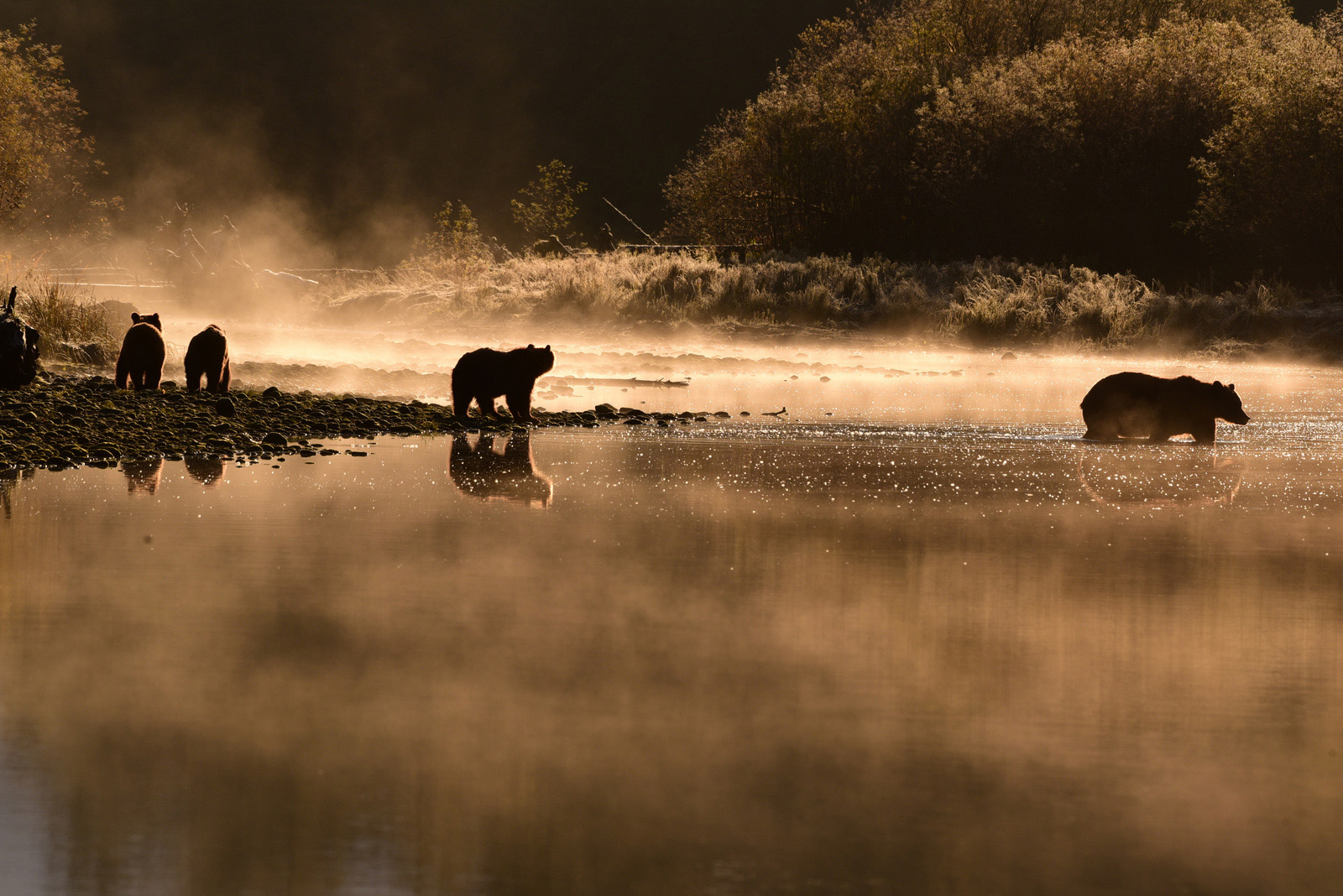A Mythical Animal?
When I think of mythical animals, the sasquatch springs to mind. In part of the Great Bear Rainforest, the “wild man of the woods” is known as B’gwus, and described as tall with thick brown hair on its chest, arms, and legs. In spite of numerous reports, there is to date, no tangible proof of their existence.
Spirit bears are so rare they are almost among the mythical animals, except we do know they exist. However when one of our local Gitga’at guides was a child, the elders hushed any mention of spirit bears. They realized the need to keep these bears secret to protect them from fur traders and so for a time they remained in the realm of myth. According to one local legend, the Wee’get, or raven—known as the creator of the world—turned every 10th bear white to remind people of the last ice age. These deeply respected bears are known locally as moksgmʼol.

Photo: Simon Ager. Did you know, not every spirit bear carries the white-furred gene?
Seeing the Light of Day
Interest in spirit bears has grown over recent years and yet their emergence from myth to reality has taken time. It took until 1905 for them to be described by science, and the subspecies named for Frank Kermode, a curator at the BC Provincial Museum. While Kermode bear (Ursus americanus kermodei) applies to both the black- and white-coated bears of the area, the name became more associated with white bears and today we tend to call them spirit bears. Just over 100 years later, in 2006, the Kermode, or spirit bear, was designated British Columbia’s official mammal.
A Rare White Coat
The remarkable white coat is due to an uncommon recessive gene which is also responsible for red hair in humans. To have a white coat, a bear must inherit the recessive gene from each parent. Their entire coat is cream or white, from the roots to the tips of their hair, and even their claws are white, however they are not albinos, nor are they polar bears. They typically have pigmented skin, dark eyes, and noses.
They are descended from bears that likely lived in ice-free regions on the continental shelf during the last ice age. Scientists have wondered why their white coat has persisted long after the ice disappeared. It is likely due to genetic isolation, small population size, and the fact that they are more successful at catching salmon during the day than black bears. A fish looking up from the water is less likely to see a white shape against the daylight than a black one. Proof can be found in the hair of a white bear which contains more marine nutrients than those of its black relatives. Today they are found in the Great Bear Rainforest, especially on Princess Royal and Gribbell Islands, with occasional bears found on the mainland, particularly around Terrace.

Photo: Jeff Reynolds. A Maple Leaf guest with Marven Robinson, bear guide in the Gitga’at First Nation
How Rare?
Some recent research by the Kitasoo/Xai’xais and Gitga’at First Nations along with academic researchers has revealed the spirt bear is rarer and more vulnerable than we thought. For several years, researchers placed “bear hair traps” throughout the Great Bear Rainforest. What they learned from this non-invasive research was that the gene resulting in spirit bears is rarer than previously thought. The current population estimate is 100 – 300 white bears, making them rarer than giant pandas or sun bears.

Photo: Simon Ager. Seeing a spirit bear is never guaranteed, but sometimes—when lucky—guests are treated to incredible encounters.
Looking for Spirit Bears
I began looking for spirit bears in the ‘90s and have seen them many years since then. I have been able to watch some bears over many years, and two of my favourites, Ringer (missing his “ring” toe), and Ma’ah (grandmother), are now gone, but fortunately there are new spirit bears coming to the salmon streams. I don’t think anyone will ever forget the sight of a glowing white-coated bear emerging from the dark forest, or one snatching a salmon from the river. It is always an immense privilege to be in their presence.
While seeing spirit bears is never guaranteed, we are fortunate to have local indigenous guides who take us to the best possible places to see them. To our guides, spirit bears are a sacred source of inspiration from their ancestral stories. They are also a symbol of the majestic beauty of the Great Bear Rainforest and hold a special role in the culture and balance of this area. I invite you to journey into the heart of Great Bear Rainforest to search for the mythical—but real—spirit bear. It will be a very special lifetime memory.



